Contents
Becoming an author isn’t as far off as it might seem – especially for affiliate marketers like you. In fact, one of the easiest ways to do it is to create an ebook.
It’s a fast and simple way to share your knowledge, grow your audience, and even generate extra income – without the heavy lifting of writing a traditional book.
As bloggers, we’re used to cranking out content. But the thought of writing and publishing a full-blown book can feel a bit overwhelming. It seems like a ton of work, right? The truth is, you don’t need to start from scratch to become a published author. You’ve already done the groundwork with your blog.
In this post, we’ll walk you through how you can take the content you’ve already written and turn it into a fully-fledged ebook. We’ve even got a handy PrettyLinks tool that’ll help you sell it!
Let’s get started on transforming your affiliate blog into a new revenue stream and growing your brand as a published author!
5 Compelling Reasons Why You Should Create an eBook
As an affiliate blogger, you’re always looking for ways to stand out in a crowded space, create lasting relationships with your audience, and boost your revenue. But how do you do that without reinventing the wheel?
One of the most effective and often overlooked strategies is to create an ebook from your blog posts. Think about it – you already have expertise and valuable content to share, so why not package it into something that not only helps your readers but also positions you as a leader in your niche?
Here are 5 compelling reasons why you should create an ebook:
- Build Trust and Authority: Writing an ebook positions you as a knowledgeable and trustworthy source in your field. Readers are more likely to trust your insights, making them more open to your affiliate recommendations, which can result in higher conversion rates.
- Increase Lead Generation: An ebook acts as a powerful lead magnet, encouraging readers to sign up for your email list. This expands your subscriber base, allowing you to nurture those leads and promote your affiliate products more effectively over time.
- Diversify Your Income: Relying solely on affiliate commissions or ads can limit your earning potential. Selling an ebook gives you an additional revenue stream, offering a product that’s 100% yours. Plus, you can bundle it with affiliate offers or other products for even greater profit opportunities.
- No Hassle Distribution: Unlike physical products, ebooks require no inventory, shipping, or additional overhead. It’s a completely digital product, making it a low-maintenance, cost-effective way to generate income while also delivering instant value to your audience.
- Create Passive Income: Once your ebook is published, it can continuously generate income with little ongoing effort. By selling your ebook directly or bundling it with affiliate offers, you create a consistent source of revenue that complements your existing affiliate earnings.
An ebook isn’t just another affiliate product to promote – it’s something that’s 100% yours. It’s your hard work, your content, and your creativity paying off, whether you’re using it to generate leads, make a profit, or bundle with affiliate promotions.
Plus, once it’s created, it works for you over and over again.
How to Create an eBook from Existing Blog Content (a Step-by-Step Guide)
Turning your existing blog content into an ebook is a unique way to repurpose valuable material and create something new for your audience – without starting from scratch.
You’ve already done the hard work by creating engaging blog posts, and now it’s time to turn them into a polished ebook. In this guide, we’ll walk you through that process – from selecting the right content to editing, formatting, and publishing.
By the end, you’ll have a professional ebook that helps you grow your audience, generate revenue, and showcase your expertise.
Step 1: Choose the Right Blog Posts for Your eBook
The first step to create an ebook is to carefully select the right blog posts. Not every post will be a good fit, so it’s essential to focus on those that will make your ebook truly valuable. Here’s how to approach it:
Identify Your Most Popular Posts
Start by reviewing your analytics to discover which posts are driving the most traffic. Your audience has already shown interest in these posts, so they’re a solid starting point for your ebook. Use tools like Google Analytics, MonsterInsights, or Jetpack to easily see which posts have the highest number of views.
These are the posts that have already proven they can attract attention, making them perfect content for your ebook.
Focus on Posts with Strong Engagement
Next, look beyond page views and focus on the posts that your readers are actively engaging with. Engagement metrics like comments, shares, and likes show that the content is not only being read but also valued by your audience.
Posts that spark this kind of interaction are great material when you go to create an ebook, as they resonate on a much deeper level with your readers.
Select In-Depth, Well-Written Posts
Choose blog posts that are comprehensive and informative, such as detailed guides or tutorials. These types of posts require less effort to convert into an ebook because they are already rich in valuable insights.
The more in-depth the content is, the easier it will be to format into chapters for your ebook without extensive editing or rewriting.
Group Posts with a Common Theme
To give your ebook a cohesive structure, focus on blog posts that share a common theme or topic. Browse through your categories and look for a topic where you have multiple related posts. This way, you can organize your ebook into chapters, with each blog post contributing to a larger, unified guide.
Step 2: Edit, Format, and Organize Your eBook
After selecting the right content, the next step in creating your ebook is to refine, format, and organize it for a professional finish that’s ready for reading.
Editing Your Ebook
Start by thoroughly editing each blog post to ensure clarity, consistency, and flow. While your blog posts might work well individually, they’ll likely need adjustments to fit seamlessly into the ebook format.
Copy your selected content into a writing platform, such as Microsoft Word or Google Docs, to make the process smoother as you create an ebook from your existing content.
Key steps for editing include:
- Enhance the Content: Revisit each section and expand on any areas that feel underdeveloped. Beef up explanations where needed, and ensure each post naturally leads into the next.
- Check for Consistency: Your blog posts may have been written at different times, so ensure the tone and voice are consistent throughout. This creates a cohesive narrative and helps keep readers engaged.
- Proofreading: Use tools like Grammarly to spot any typos or grammar slips. A smooth, error-free read will make your ebook look sharp and professional.
Don’t forget to write a strong introduction and conclusion for your ebook. The introduction helps set the stage by explaining what the reader will gain, while the conclusion ties everything together and reinforces your key points.
Formatting Your Ebook
With editing done, it’s time to focus on formatting. Proper formatting makes your ebook easier to navigate and more enjoyable to read.
Key formatting tasks include:
- Create a Table of Contents: This gives your readers a clear path to follow through your ebook.
- Add Essential Pages: Consider including pages for copyright, acknowledgments, your affiliate link disclosure, or dedications if you feel they’re needed.
- Use Lists and Highlights: Use bullet points, numbered lists, and bold text to break up information and make it easy to scan.
- Incorporate Visuals: Adding images or infographics can break up the text and keep readers engaged, but be selective – make sure every visual adds value.
- Pick a Strong Title: Make sure your ebook title is unique and stands out. A catchy, memorable title will help it get noticed in the crowded market.
Once you’ve completed the formatting process, your ebook will not only look more professional, but it will also offer a much smoother reading experience. The right formatting makes it easier for your audience to navigate the content, keeping them engaged from start to finish.
Designing Your Ebook
Design is an important part of making your ebook visually appealing and professional:
- Cover Design: Your cover is the first thing people will notice, so it’s worth investing time or resources here. You can DIY it with tools like Canva or hire a freelancer to create something eye-catching.
- Layout Matters: Make sure your chapters are clearly titled, images are well-placed, and page breaks make sense. A clean and simple layout will make your ebook a breeze to read.
Final Proofreading
Before you move to the actual publishing step, give your ebook a final read-through to catch any lingering mistakes. Whether you do it yourself or hire a pro, this last step ensures your ebook is error-free and ready to impress.
Step 3: Publish Your eBook on the Right Platform
Now that your ebook is ready, it’s time to bring it to life by choosing the right platform, setting up your distribution channels, and making sure it’s easy for your audience to find.
This is the exciting part where all your hard work pays off, and your ebook finally reaches the hands of your readers.
Choosing the Perfect Publishing Platform
When it comes to publishing your ebook, picking the right platform can feel like a big decision – and it is! The platform you choose will affect how easily you can reach your audience, how much control you have over pricing, and even how much of your profits you get to keep.
Luckily, there are several great options, and each one brings its own strengths to the table.
- Amazon Kindle Direct Publishing (KDP): If you want access to the largest online bookstore, KDP is hard to beat. With Amazon’s massive reach, you can sell your ebook worldwide. Plus, they offer a user-friendly process to upload, format, and track your sales. Royalties: 70% on ebooks priced between $2.99 and $9.99, or 35% if priced lower.
- Smashwords: If flexibility and wide distribution are key, Smashwords is an excellent choice. This platform lets you set your own prices and distribute your ebook to major retailers, all while maintaining a high level of control over your work. Royalties: Up to 85% on direct sales.
- Barnes & Noble Press: Want to see your ebook on the virtual shelves of a big-name bookseller? Barnes & Noble Press offers that, plus the flexibility to price your ebook however you want. The best part? No exclusivity required, and you can even offer your ebook for free if that’s part of your strategy. Royalties: 70% on ebooks priced above $0.99.
- Draft2Digital: If you want to streamline the distribution process, Draft2Digital has you covered. This platform simplifies publishing across multiple retailers, handling the heavy lifting while you sit back and collect your royalties. Royalties: Up to 70% on ebook sales.
- Apple Books: Apple Books is perfect for those looking to tap into Apple’s dedicated user base. Publishing here gives you access to iOS users across the globe, and the sleek interface makes it easy for readers to find and purchase your ebook. Royalties: Up to 70%.
- Google Play Books: Looking to reach a global audience? Google Play Books leverages Google’s vast ecosystem to get your ebook in front of readers worldwide. With its competitive royalty rates, this platform ensures your ebook reaches far and wide. Royalties: Up to 70% on ebook sales.
Now, while these platforms offer fantastic exposure, they also take a bite out of your profits. If you don’t feel like giving up a percentage of your hard-earned income, we’ve got a solution for you!
PrettyPay™ by PrettyLinks allows you to sell your ebook directly from your blog or website – no middlemen, no commissions, and no profit-sharing. Keep 100% of your revenue and sell your ebook on your own terms.
Step 4: Market and Promote Your Ebook to Maximize Sales
Publishing your ebook is just the beginning. To make it successful, you’ll need to promote it through different channels to reach your audience:
- Email Marketing: Your email list is a sure way to reach people who are already interested in what you have to offer. Send a personalized email campaign announcing your ebook, with a clear breakdown of how it will benefit your readers. Highlight any exclusive content or insights not found on your blog to entice them to purchase. Be sure to include your PrettyPay link directly in the email, making it easy for subscribers to buy your ebook with just one click.
- Social Media: Use social media to create buzz around your ebook. Instead of just posting a link, share engaging visuals like behind-the-scenes content, sneak peeks of chapters, or quotes from the ebook. You could even go live to talk about the ebook and answer questions. Using Instagram or Facebook Stories with interactive features like polls or quizzes can also drive interest and engagement. Wherever possible, include your PrettyPay link in your posts, bio, or stories so your audience can easily purchase your ebook without leaving the platform.
- Partnerships and Collaborations: Partnering with others in your niche can significantly broaden your audience. Reach out to fellow bloggers, influencers, or industry experts for guest posts, interviews, or social shoutouts. Consider offering them a free copy of your ebook so they can get familiar with it and promote it to their followers more authentically. You can also collaborate on a webinar or podcast episode where you discuss topics related to your ebook. During these collaborations, make sure to share your PrettyPay link, allowing audiences to buy directly from where they hear about you.
- Leverage Your Blog: Your blog is a natural platform for promoting your ebook. Write a blog post detailing the story behind your ebook, why you wrote it, and what readers can expect. Share excerpts or turn a section of the ebook into a blog post, linking to the full version for readers who want more. You could also update older posts to mention and link to your ebook, especially posts that are closely related to the ebook’s topic. Consider adding a banner or popup to your site that promotes the ebook for maximum visibility.
PrettyPay™ links pair perfectly with the Product Display feature, allowing you to create a visually appealing product display for your ebook.
With this feature, you can showcase the cover image, write an enticing description, and include a prominent “Buy Now” button.
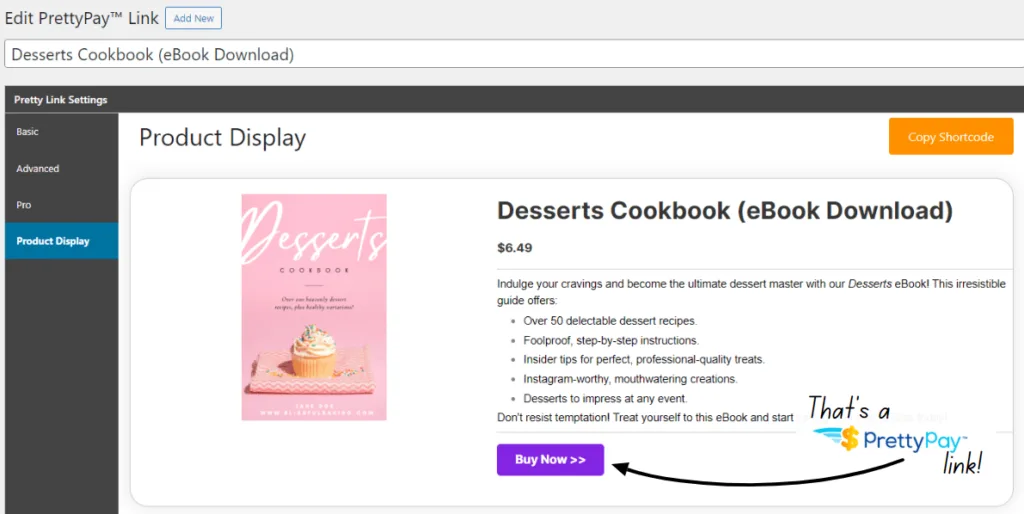
This setup ensures that readers can easily understand the value of your ebook and complete their purchase in just a few clicks.
The combination of PrettyPay™ and Product Displays makes it incredibly easy to promote and sell your ebook anywhere on your website or blog. With the ability to keep 100% of your profits, it’s a simple yet powerful way to leverage your existing content and audience to drive ebook sales.
Conclusion
Creating an ebook from your existing blog content is not only a smart way to repurpose valuable material, but it’s also an incredible opportunity to grow your audience, boost your income, and establish yourself as an authority in your niche.
From selecting the right content, editing and formatting, to promoting and selling your ebook, the process is simpler than you might think – and the results can be truly rewarding.
By leveraging the tools you already have, like your blog and email list, and pairing them with PrettyLinks’ powerful features, you can create a seamless sales experience for your readers. Whether it’s product displays, easy-to-use checkout links, or direct promotion through your blog and social media, PrettyLinks ensures that every part of your ebook marketing is smooth, professional, and profitable.
So, what are you waiting for? Now’s the perfect time to take your hard work and turn it into something bigger. Create your ebook, promote it across your channels, and sell it directly to your audience with PrettyLinks.
Start today and watch your ebook transform into a valuable asset for your blogging business.
If you liked this article, be sure to follow us on Facebook, Twitter, Pinterest, and LinkedIn! And don’t forget to subscribe to our newsletter!
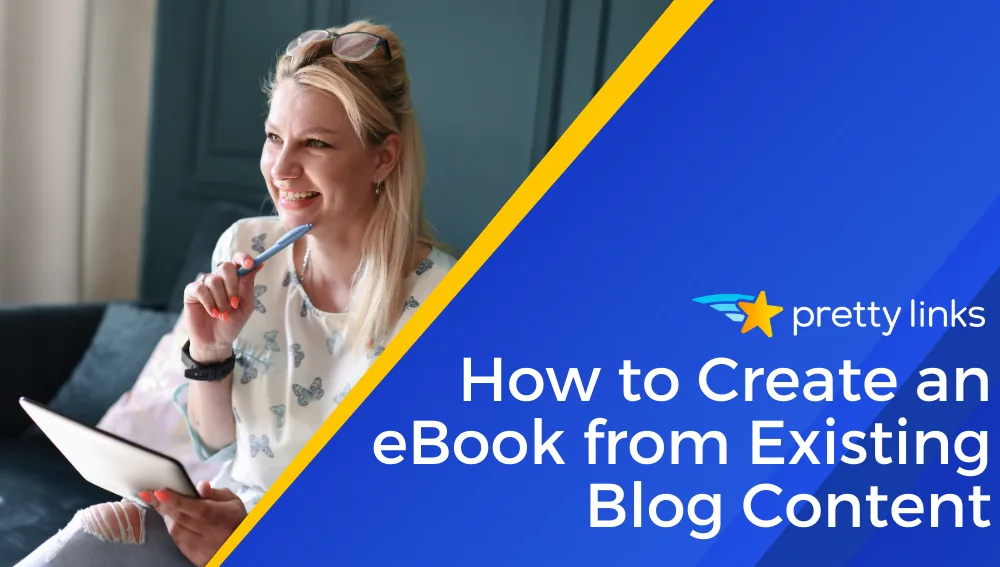


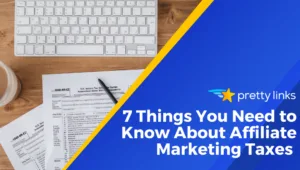

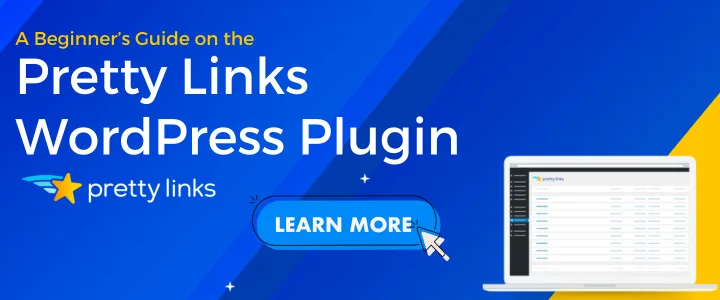

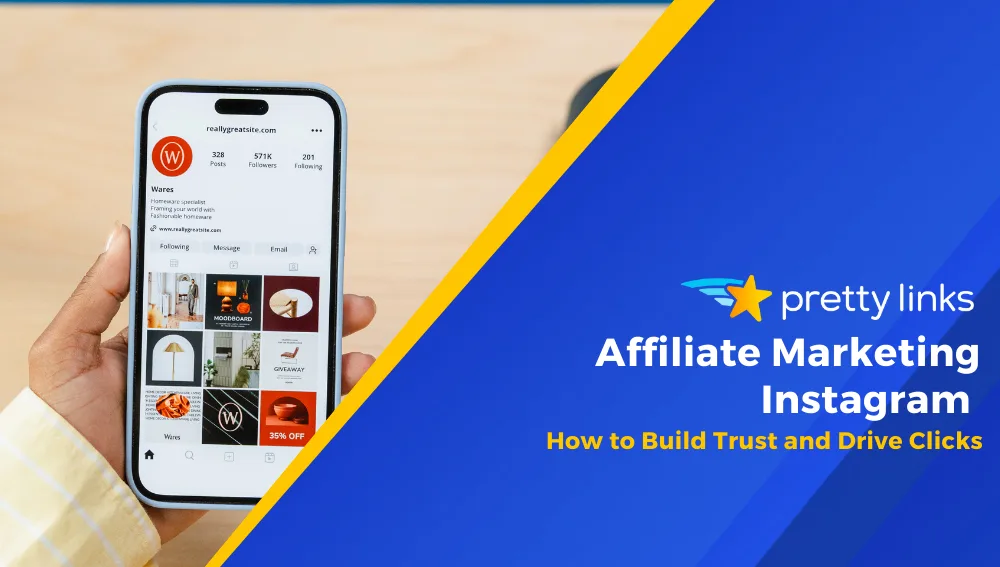

Leave a Reply